Blog
DE MADRID Y DEL GRIFO
In our blog you will find tips to save water and learn how we work to convey it with the best quality to your tap in Madrid
DE MADRID Y DEL GRIFO
In our blog you will find tips to save water and learn how we work to convey it with the best quality to your tap in Madrid
FROM MADRID'S TAP
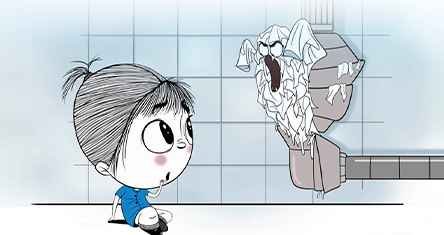
Suscríbete al blog
MORE TAP AND LESS SHOWER: THIS IS HOW WE CONSUME WATER DURING LOCKDOWN
There are significant differences between consumption in the first week of March, before all the lockdown measures, and that of the last week of the same month

Thanks to a consumption-monitoring project undertaken by our Sub-directorate of R+D on a voluntary sample of households, we were able to compare how the pattern of water consumption in homes has changed: both the quantity and the consumption times and specific uses of water. In this post we compile the facts that we have found most striking.
- HOUSEHOLDS CONSUME ALMOST 10 LITRES MORE PER DAY
It’s obvious why. If we spend more time at home, we consume more water at home: as much as 3.5 % more during quarantine, that is, about 10 litres a day. This comes as no surprise, since much of the consumption that formerly took place at school, the office or places of leisure, is now done entirely at home.
- NEW SCHEDULES: PEAK CONSUMPTION IS NO LONGER AT 7.00
With the expansion in remote workers, we wake up later and adopt new routines. While before lockdown, morning consumption was at its highest between 7.00 and 8.00, while we’re confined at home, this peak consumption is stretched over four hours, from 11.00 to 15.00. In the afternoon, the graphs show a curious fact: at 20.00, water consumption goes down a notch, coinciding with the applause for health service staff on balconies and at windows.
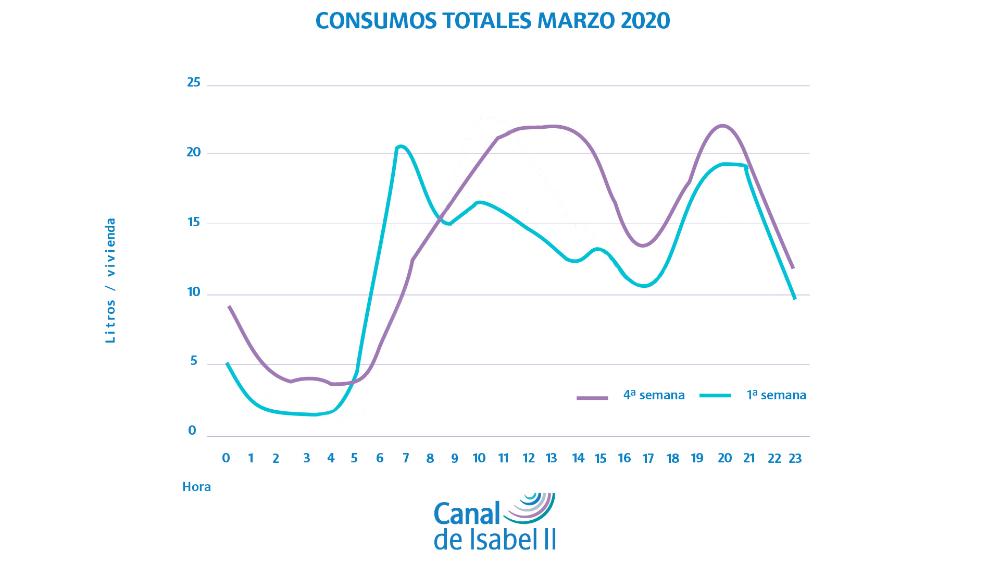
- IN THE BATHROOM, CISTERNS HAVE IMPROVED THEIR PERFORMANCE
Naturally, we use the bathroom more at home. Therefore, the number of times we flush the toilet has risen by 6 %. Likewise, now their use begins earlier and is stable over the course of the day. Curiously, cisterns consume least, excluding the middle of the night, right at 20.00.
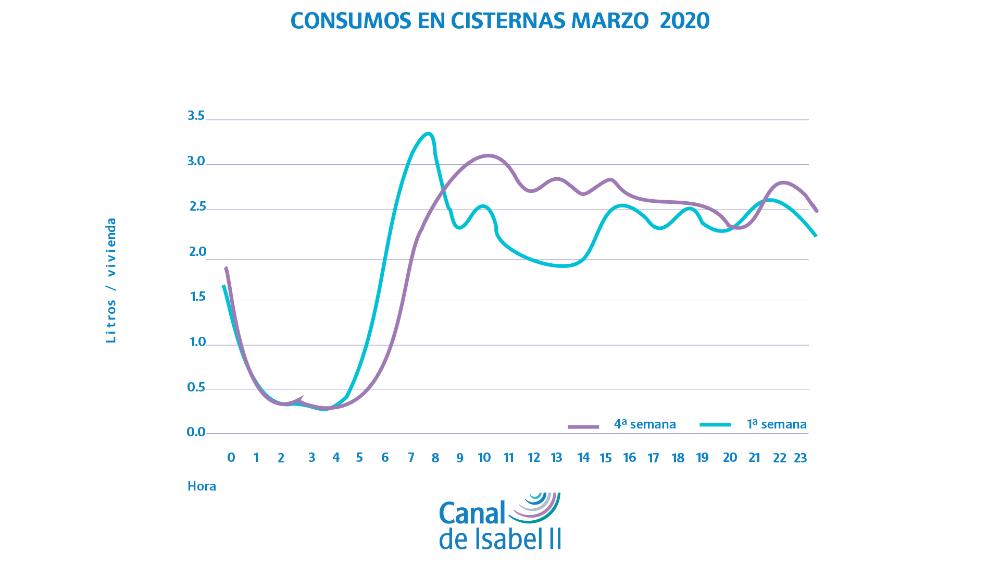
- TAPS DON’T LIE: WE WASH OUR HANDS MORE THAN BEFORE
Consumption through taps has increased by 14 %. Now we open them more often. Their peak use is at noon, either to wash our hands before lunch or to wash the dishes afterwards. Between 14.00 and 16.00, Madrid residents’ taps hardly have a moment’s rest.
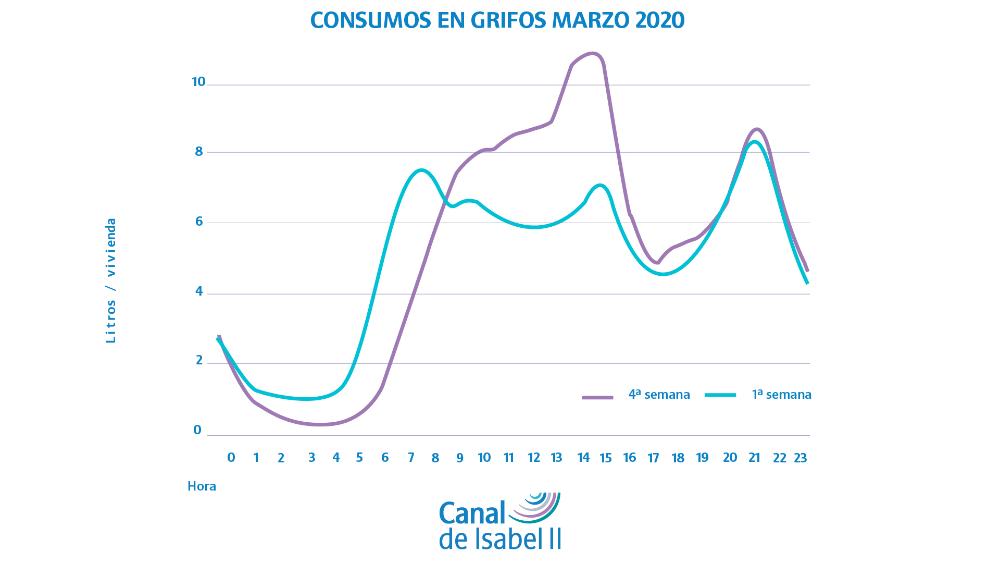
- THE USE OF THE DISHWASHER HAS SHOT UP, INCREASING BY 19 %
Following the same logic, dishwashers operate at full capacity after meals. While at the beginning of March they were mainly put on after 21.00 (after dinner), now they are full of dishes and they are turned on earlier. Previously, those who ate out did had no need to put them on until night-time, but now they do. This is, without a doubt, the most notable change: the use of this appliance has increased by 19 % during lockdown.
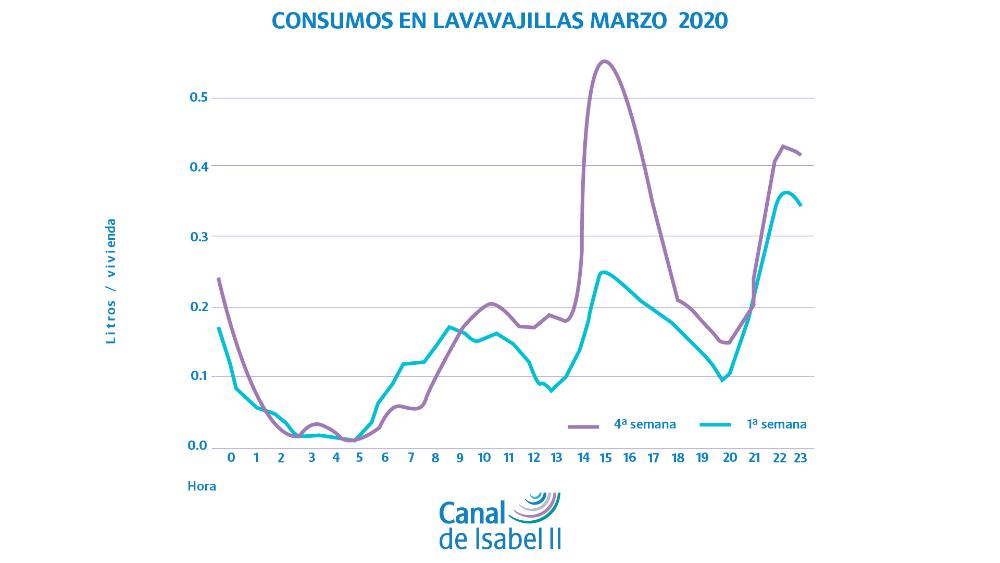
- WE DON’T CHANGE CLOTHES AS MUCH: WE CONSUME 16 % LESS WATER IN WASHING MACHINES
We have hardly left the house, so our wardrobe has not been as varied as usual. During lockdown, we dirty our clothes less and we can better plan when to put on the washing machine, as well as washing a full load. It’s therefore no surprise that households have consumed 16% less water using washing machines. The favourite time to put them on is still the morning, though not so early. But the habit of washing in the late afternoon has almost completely disappeared.
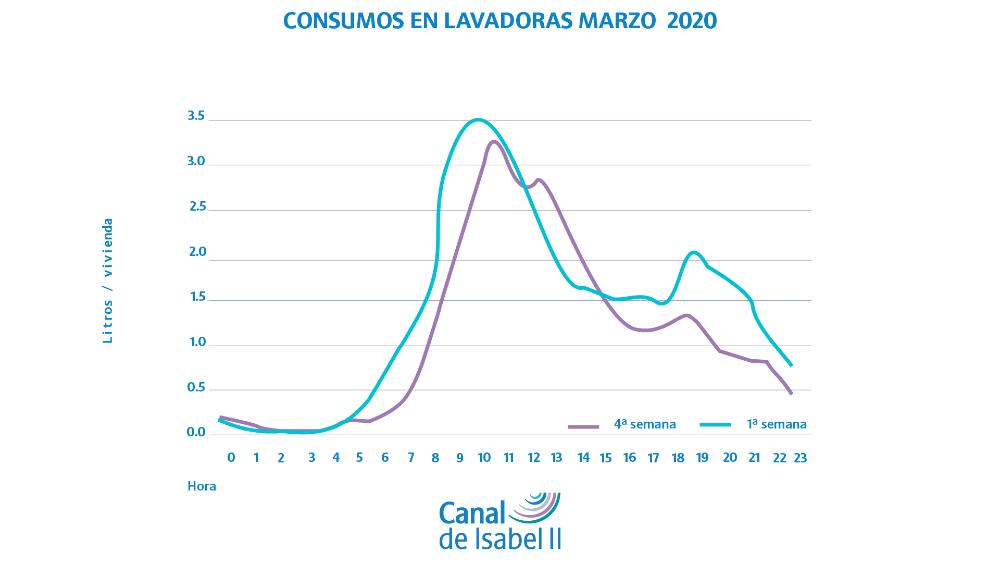
- WE SHOWER LESS AND DO SO LATER
Shower use is down 12 %. Moreover, during lockdown, it’s illustrative to see how the morning shower has moved to night-time. In these new times, shower consumptions peak at about 21.00; previously, it was the first thing in the morning, as soon as we got up. Less exercise, less movement, less contact with pollution and dirt in the street and, in general, less dynamism in a cleaner environment may be the causes of this fall.
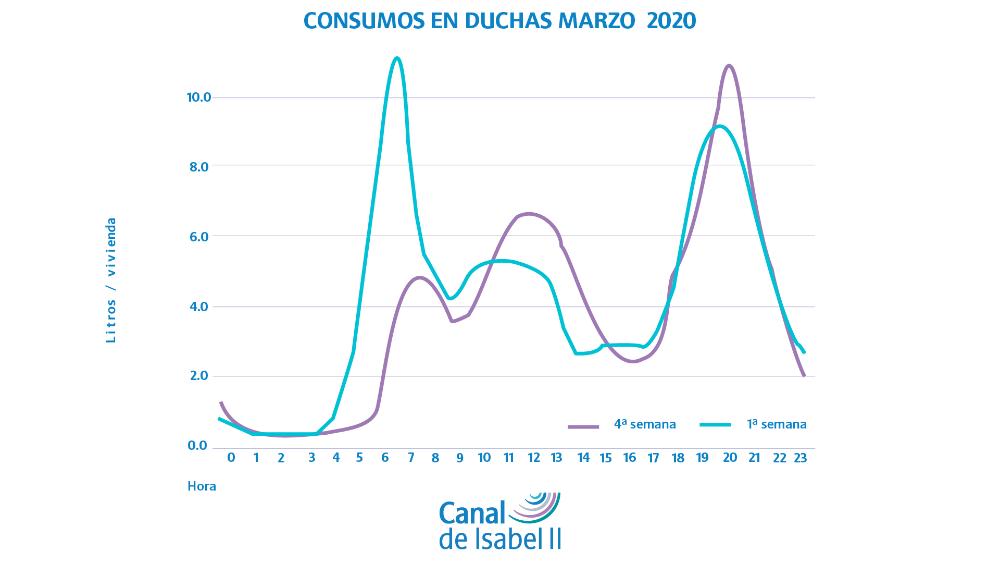
In short, according to the data obtained from this sample, the differences in household water consumption are more qualitative than quantitative: consumption remains responsible and it shows that Madrid residents, even in the middle of a pandemic, continue to be careful with water.
Suscríbete al blog
